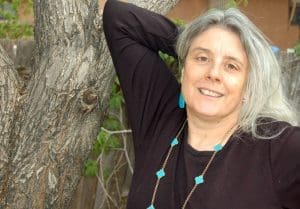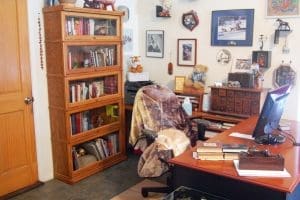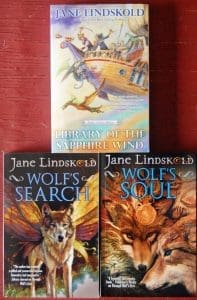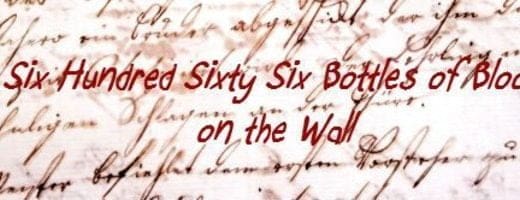WIHM 2022: Jane Lindskold: The Fantasy of Full-Time Writing.
 Jane Lindskold: The Fantasy of Full-Time Writing
Jane Lindskold: The Fantasy of Full-Time Writing
By Angelique Fawns
Is it your dream to be a full-time writer? What would that life be like? I had the opportunity to meet the New York Times best-selling author Jane Lindskold when she spoke to my Dreamcasters writing group this month. Lindskold is best known for her acclaimed Firekeeper fantasy series, and the Breaking the Wall fantasy series, but those are just the tip of her publishing iceberg. She has more than 24 novels and 70 short stories to her name. Other novels include The Buried Pyramid, Child of a Rainless Year, Changer and Legends Walking. Her short fiction has found homes in magazines like Lightspeed, Asimov’s Science Fiction, and DreamForge. She got into the weeds with the Dreamcasters about her life in New Mexico and personal author journey. I decided I wanted to learn more…
1) When did you know/decide to take the leap to being a full-time writer?
 The short answer is in the middle of 1994. That’s the “decide” part. The “know” is a lot more complicated.
The short answer is in the middle of 1994. That’s the “decide” part. The “know” is a lot more complicated.
I started seriously focusing on fiction writing after I finished my PhD, pretty much the minute I’d turned my dissertation over to the committee for review. I’d love to say that I started selling right off, and never looked back, but that wouldn’t be true. I got a lot of rejections, took a job teaching college literature, composition, and business writing, and kept on trying to break in as a fiction writer.
While I was still teaching college, I began to sell short fiction, then I sold my first couple of novels. However, I certainly wasn’t ready to quit my secure job as an Assistant Professor of English to write full-time. What made me make the choice was wanting out of my marriage (I’d gotten married right out of undergrad) around 1994.
I was prepared to go find another teaching position, but Roger Zelazny asked me if I would come and live with him in New Mexico. I did, went full-time as a writer, and have managed to keep writing as my job up to this day.
Roger died in mid-1995, of cancer. I stayed in New Mexico, kept writing, and struggled a lot. I married Jim in January of 1997. I’m proud to say that while there have been some pretty low-income years, I’ve always made enough that I could pay my own half of our expenses. That’s important to me seeing myself as a working professional with a job, not a dilettante.
In my option, after learning how to write, how to meet deadlines, things like that, learning how to budget, how to live below one’s means, so there are savings for the lean years, are probably the most necessary skills for a writer who doesn’t want to hold down another job.
2) What is your morning routine?
I get up shortly after 7:00 a.m. Shower, go to my computer. While I have my coffee and some dark chocolate, I start answering e-mail and checking my social media.
I do this until about 9:30 a.m., when I stop and have brunch with my husband, Jim.
About 10:30 a.m., I go back to my computer. I either finish up with e-mail etcetera or, if that’s done, move on to the jobs for the day. I’d love to say that as a full-time writer that means that writing comes first. However, sometimes business has to do so.
My next break is around noon, to feed the animals, make more coffee, and have a “snack and treat” break with Jim. Usually, during that time I read. I learned long ago that if I don’t read, my writing suffers.
In the afternoon, in case you wonder, after snacks and treats, I give my e-mail and social media another check. This time, however, unless there is something urgent, I don’t mess with it. Instead, I move to some aspect of writing. Sometimes that’s writing something new; sometimes it’s editing or polishing. Depends on where I am in a project.
My other priority is making sure I get some exercise, so I fit that in.
Quitting time is usually early evening. Like most people with a job, I don’t work after quitting time. However, if the Muse is talking to me, I’ll go back to writing.
This is my Monday through Friday schedule. I usually try to take weekends off, because that helps me keep in the mindset that this is my job.
Why do I take weekend off? Not just for the structure of a job. Roger’s death taught me young (I was only 32), that those you love won’t always be there. I got lucky with Jim. He’s very supportive of my work, including going to conventions with me, proofing my manuscripts, and a ton of other things. In return, I make him a priority.
3) Where do you write and what is your environment like?
 I write in a home office Jim and I put onto the house a decade or so back. Before that, a spare bedroom served as my office.
I write in a home office Jim and I put onto the house a decade or so back. Before that, a spare bedroom served as my office.
However, I’ve gone out of my way not to lock my creativity to one location or one set of tools. Back when I taught college, I would often write while my students took a test or during office hours. I once wrote a story during a faculty meeting. (“Relief” which appeared in the anthology Heaven Sent.)
I’ve seen too many writers create boxes to help themselves get in the mood to write. My box is to try to avoid boxes at all costs.
4) You are a multi-genre writer. What is your favorite to pen and why?
 I mostly write SF and Fantasy, because that’s the sort of story my brain comes up with. The unreal often seems more real to me than something strictly “real.”
I mostly write SF and Fantasy, because that’s the sort of story my brain comes up with. The unreal often seems more real to me than something strictly “real.”
I have written Horror, although probably more on the “Dark Fantasy” side, rather than all out slasher. I don’t care for grimdark. My real life has had enough of that. I don’t want to go there when I’m writing.
5) What do you like reading best?
I don’t have single type of fiction I prefer. I do read SF and F, both older stuff and new releases. So many professional writers stop reading in their genre, and I think that’s a mistake.
I also like classic mystery, history (although not usually historical fiction), poetry, biography, and anthropology.
6) If you could go back in time and give young Jane (before your writing career took off) one piece of advice, what would it be?
The field is changing, and you need to be ready to change with it, especially in being willing to do social media.
7) Which writers influenced you the most in your career?
If you mean professionally, Roger Zelazny. He taught me a lot about the business side of being a writer. I also loved his work. We both shared a passion for mythology and legend, and mythic fiction remains a great love of mine, whether using mythic settings or characters, or designing the underlying mythologies for my own worlds.
If you mean in terms of fiction… Two authors whose work I love are Patricia McKillip and Terry Pratchett. I could never write the sort of things they do, and so I take a particular joy in their work. I also really admire Tim Powers. Oh, and Charles de Lint.
In all of these cases, the influence was in making me want to find my sort of story, not to imitate them.
There are also a lot of authors who have written works I admire. There’s a partial list on my website under Neat Stuff. I add to it occasionally, but it is far from complete. If you want an idea of what I read, you can tune in to my Friday Fragment’s blog every week.
8) Tell us a bit about your current new releases.
My most recent release is Library of the Sapphire Wind (February 2022). It will be followed in April 2022 by its sequel, Aurora Borealis Bridge. Before that, I wrote two new books in my Firekeeper Saga, Wolf’s Search and Wolf’s Soul.
I’ve also been working on getting my backlist up in new e-books. I’m almost done, which is quite an achievement, given that I think this covers something like seventeen books. Only three more to go!
You can follow Jane’s work at her homepage as well as Facebook and Twitter!
- About the Author
- Latest Posts
Angelique Fawns writes horror, fantasy, kids short stories, and freelance journalism. Her day job is producing promos and after hours she takes care of her farm full of goats, horses, chickens, and her family. She has no idea how she finds time to write. She currently has stories in Ellery Queen, DreamForge Anvil, and Third Flatiron’s Gotta Wear Eclipse Glasses. You can follow her work and get writing tips and submission hints at http://fawns.ca/.

 Jane Lindskold: The Fantasy of Full-Time Writing
Jane Lindskold: The Fantasy of Full-Time Writing










